This is a two-week itinerary in Costa Rica to discover the lush landscapes and enjoy an authentic experience away from tourist traps and Americanized hotspots. Known as the jewel of Central America, Costa Rica boasts unparalleled biodiversity and breathtaking scenery. Prepare for an immersive adventure into the heart of Costa Rica’s Pura Vida, where exceptional wildlife and natural wonders await at every turn. Join us on a voyage of discovery as we unveil the hidden gems of this remarkable destination.

Two-week itinerary in Costa Rica by bus
During my journey in Central America, I traveled in Costa Rica for two weeks. There is a good network between the must-see places in the country. I did all my itinerary in Costa Rica by bus without any issues and this is a really good economic option. Click here for more tips to travel on a small budget in Costa Rica.
1. The capital, San José
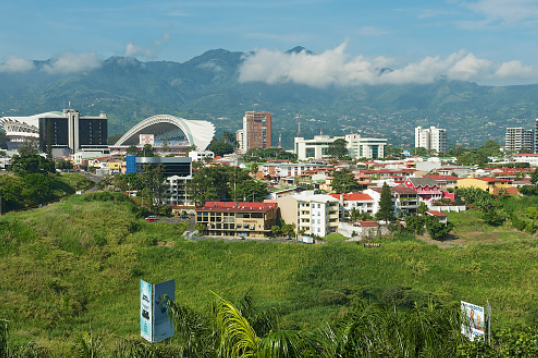
The capital of Costa Rica does not have much interest. This is the first time I say this about a city, usually I always find something positive about them, but frankly I couldn’t find an interest about the city itself.
Nevertheless, we had to make several stops there. We had to pass by San José to go from a destination to another by bus. Also, the Poas volcano is close to San José, so it’s an easy day trip from there.
2. The Poas volcano

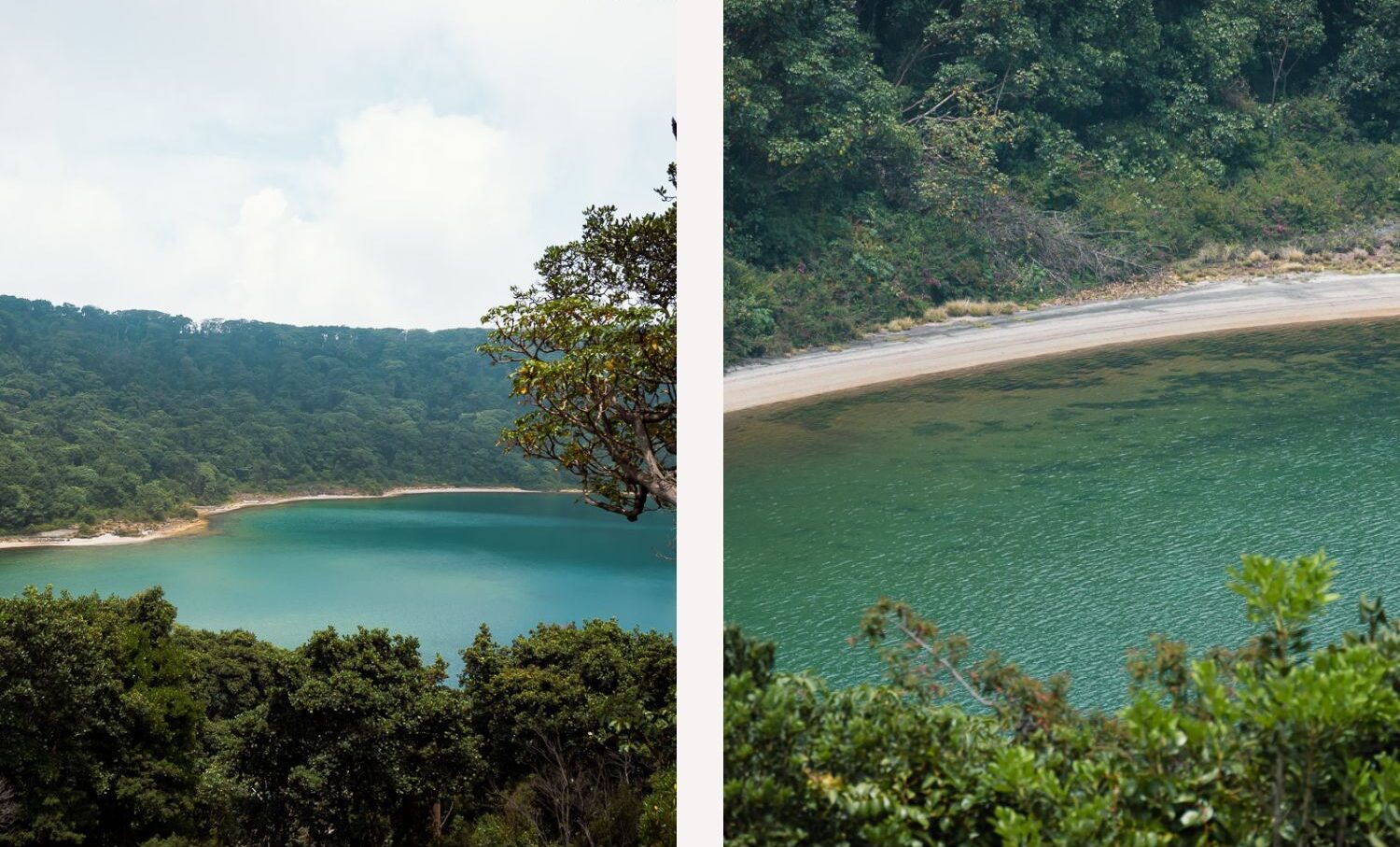
Poas is one of Costa Rica’s still active volcanoes. It has a very large crater that gives off a strong sulphur smell.
-
How to join the Poas volcano from San Jose by public transport ?
You need to take two different buses to arrive at the entrance of the Park.
-
- First bus: From San José (Terminal TUASA) to Alajuela. There are often all day long (every 10 minutes). You go to the terminus (last stop). The journey takes about 35 minutes.
- Second bus: Once arrived at Alajuela (Terminal TUASA), you need to go to the Terminal FECOSA and to search for the bus that is going to Poas. There are only two buses per day (two to get there, two to get back). Pay attention to the timetables, as they change depending on the day of the week.
-
Tips for a better experience at the Poas volcano
You better arrive early as clouds settle in late morning and completely block the view.
I have to warn you about this trip that this is not the most optimized to have a good experience at the volcano Poas. Indeed the bus timetables don’t allow to arrive early enough, and you don’t have so much time on site as the last bus leaves early. We had like two hours maximum on site. Moreover, we didn’t arrive early enough to have a clear view on the crater. Bearing in mind that admission to the park is very expensive, we were a little disappointed with the experience. We went there on the satuerday so maybe the bus timetables are better during the week, I couldn’t tell.
3. Pacific beaches & Natural Park of Costa Rica – Quepos & the Manuel Antonio National Park
The next stop in our itinerary : Quepos, located on the Pacific coast. From Quepos, you can visit one of the most reknown national parks of Costa Rica, the Manuel Antonio Park.
The National Park of Manuel Antonio


The park is well-known for its biodiversity, its lush landscapes and beautiful beaches. It is one of the most visited park of Costa Rica. We were lucky to observe several animals as capuchin monkeys, squirrel monkey, howler monkeys, sloths and much more.
The park is huge, we hiked for 7 hours inside the park. We arrived at the opening to avoid the crowds and to have more chance to observe animals.
Staying at Quepos or Manuel Antonio ?
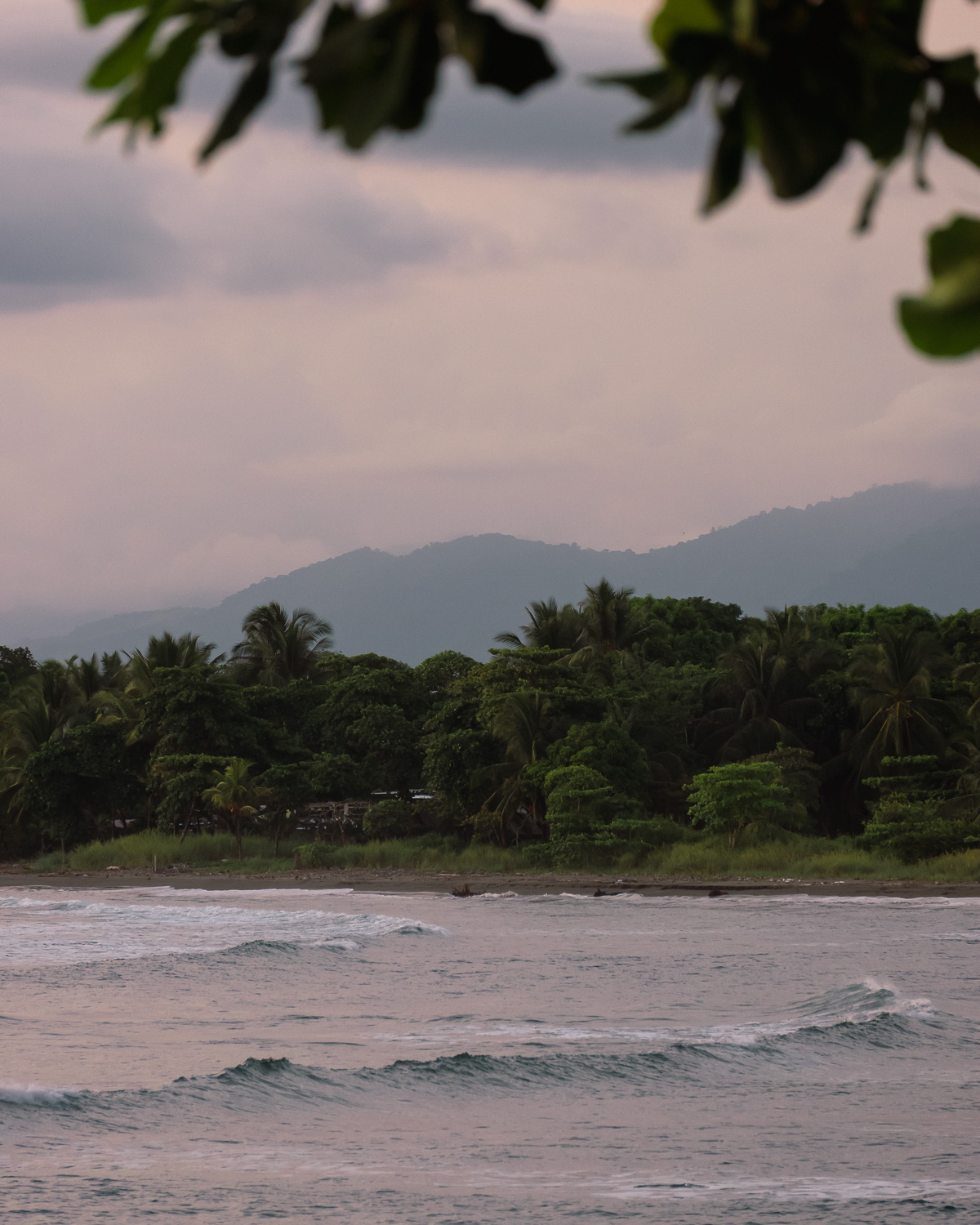
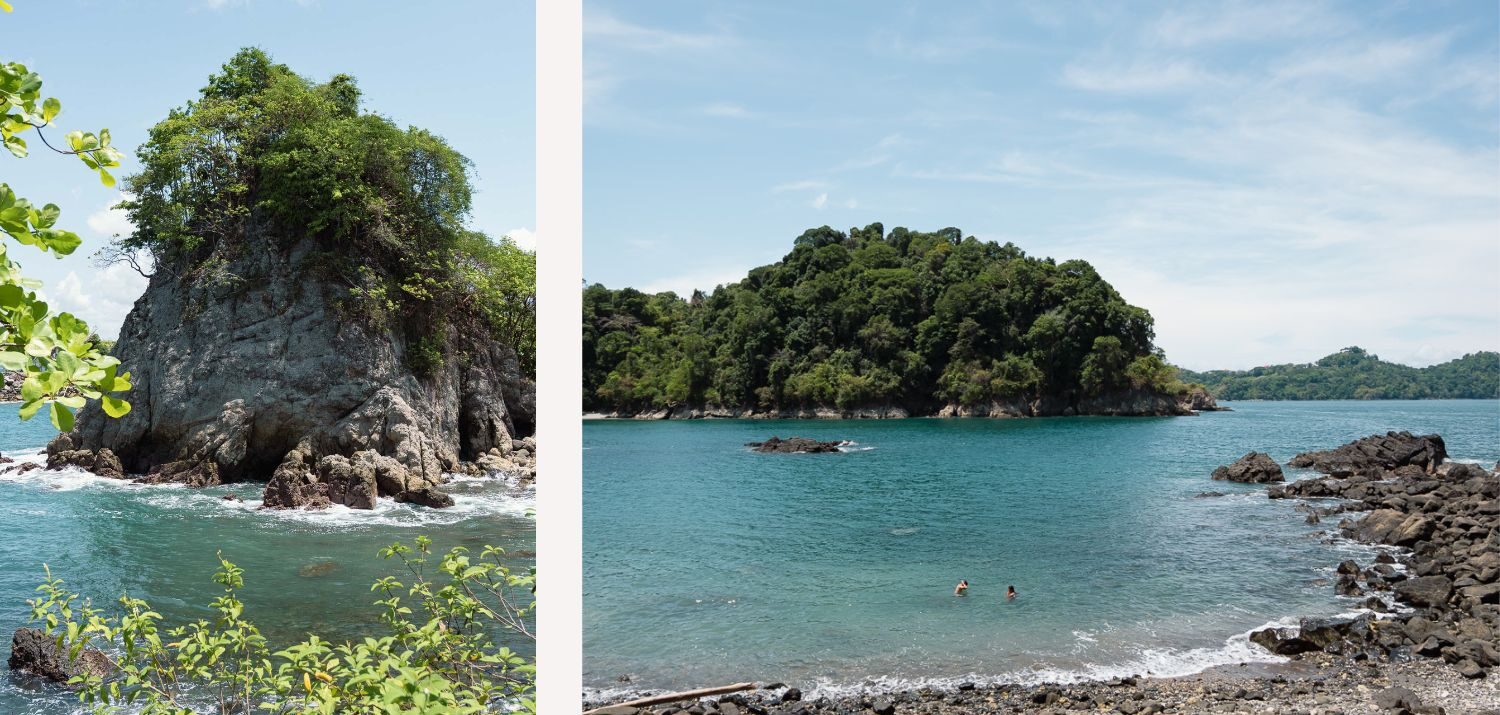
You can make the choice either to stay at Quepos or Manuel Antonio. Personally we chose to stay at Quepos because this is cheaper and less touristic. Also you can easily join the national park by bus. It starts early in the day so you can arrive for the opening if you like. Originally there was no town in Manuel Antonio, it has been built for the tourists. So you will only find hotels and restaurants and no authenticity at all. Definitely not our cup of tea.
Quepos is a small town next to the sea. The town itself is not particularly nice but it is surrounded by the jungle. The advantage of Quepos is its beautiful remote beaches less frequented by tourists compared to the ones of Manuel Antonio. There are also nice hikes to do from there.
4. Picturesque mountain villages & Nature Reserves of Costa Rica – Monteverde
Monteverde is located in the mountainous region of Costa Rica. It is known for the great biodiversity of its cloud forests. This area was my favorite part of the itinerary in Costa Rica for the unique flora and fauna and natural wealth.
The moutain village of Santa Elena

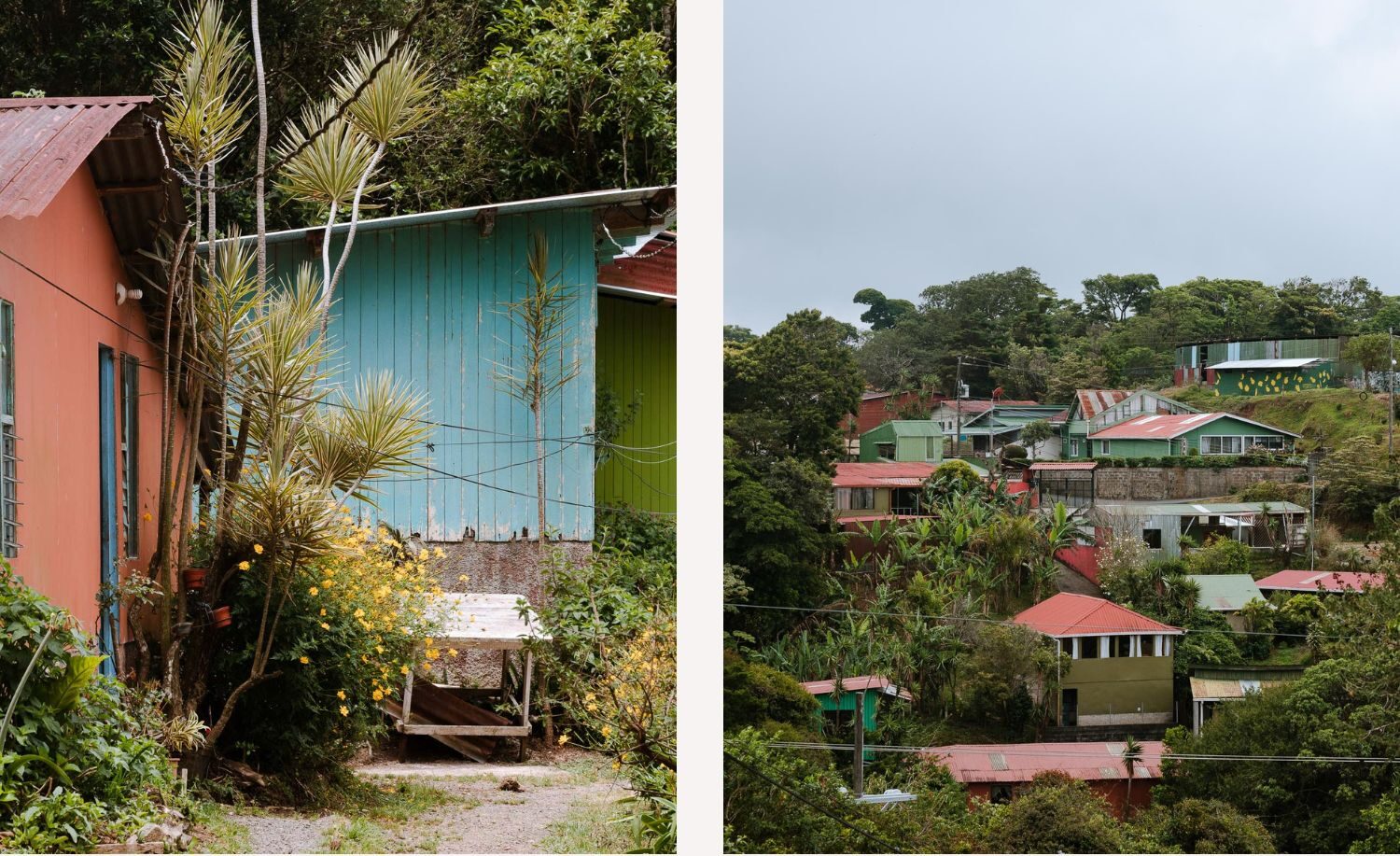
The closest village where to stay is Santa Elena. A direct bus from San José stops in the village. Santa Elena is a really small mountain village. From there, you can easily reach the several parks and reserves. Usually, hotels offer to book buses to take you to the parks so it’s quite conveniant.
In the surroundings of Santa Elena, there are few walks to do. You can easily walk around and observe several bird species. We succeed to see Toucans and Motmots.
The Monteverde Cloud Forest Biological Reserve

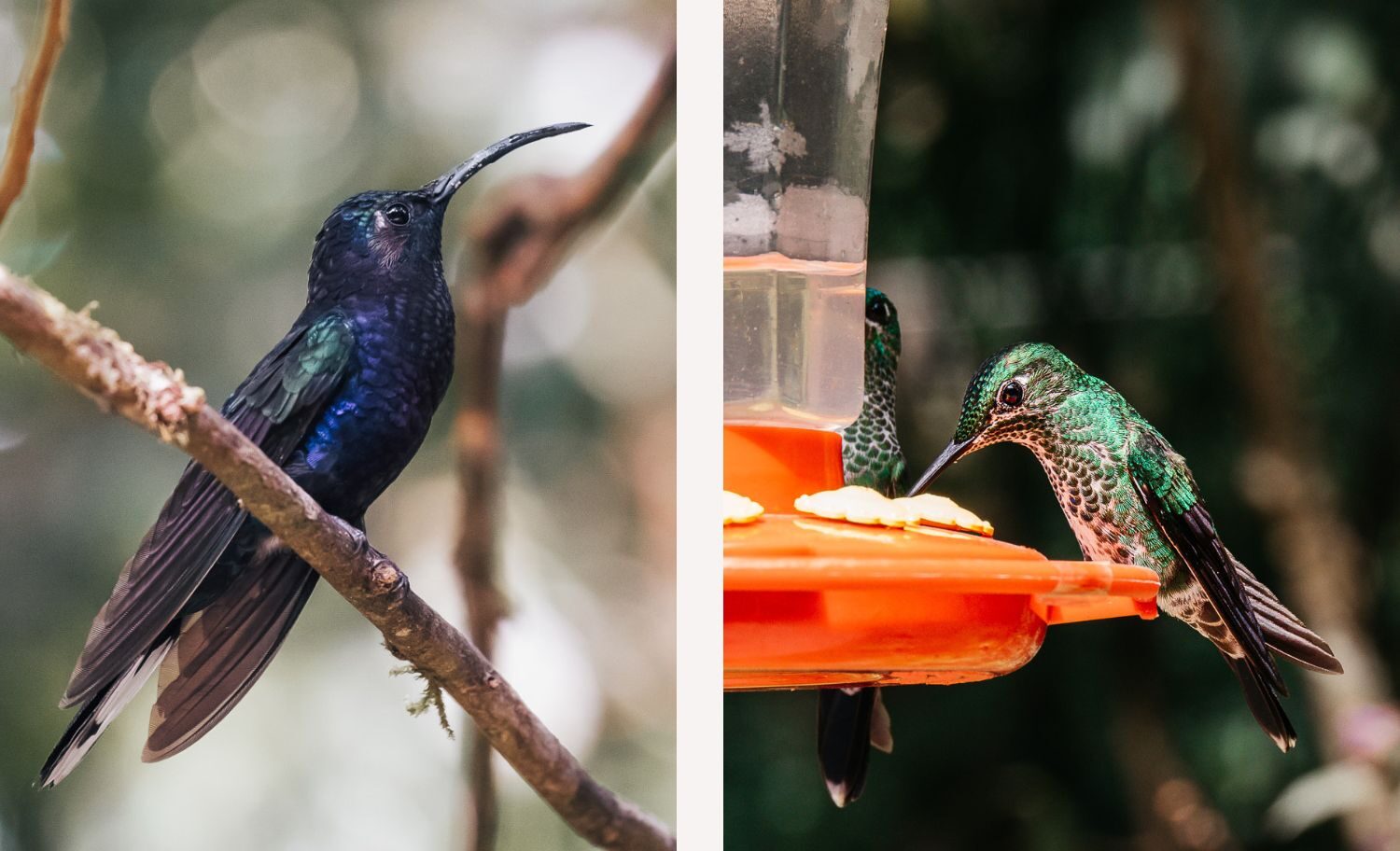

There are several reserves to visit around Santa Elena. The most famous one is Monteverde Cloud Forest Biological Reserve. It means that there are also more people in this park. But the parks is so huge we didn’t feel that was the case. Also, we were not there during the high season (april) so there were not many people in the area. You can visit by yourself or book with a guide to have more chance to observe the animals of this primary forest. We didn’t book a guide, and tried to observe animals by ourselves. We spent at least 6 hours there. I loved it, the natural wealth there is amazing.
Monteverde’s lesser-known nature reserves

We loved the area so much that we’ve decided to stay longer than planned. This allowed us to visit another park. There are two others reserves : Santa Elena and Curi-Cancha. These two are less known so there are less tourists. The entrance is also less expensive. So we chose to go to the Santa Elena Reserve and this time we booked with a guide to have more chance to observe animals. We were lucky as we could see a tarantula, toucans but also the famous and iconic Quetzal. These are super complicated to observe ans quite impressive.
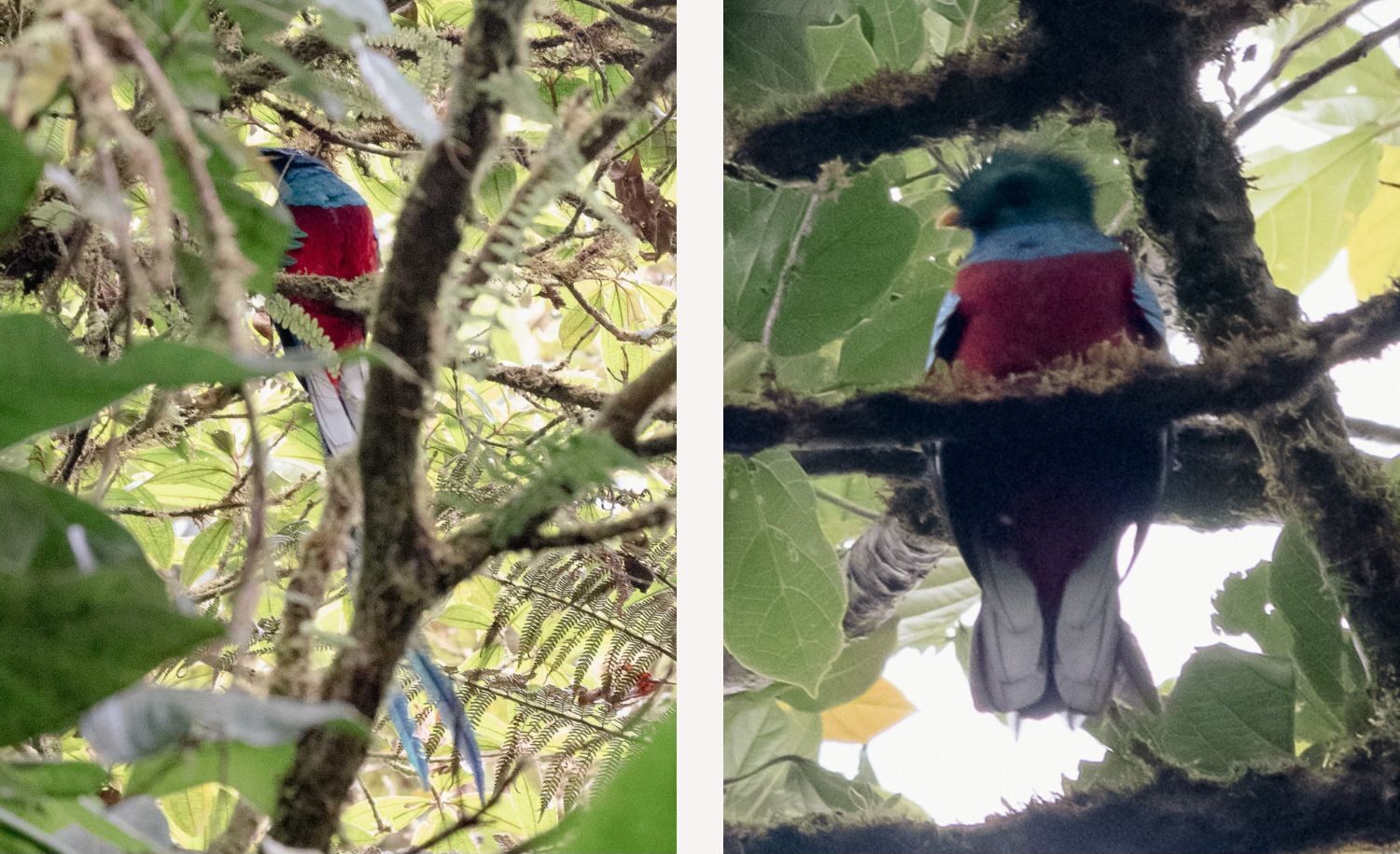
5. Caribbean beaches & fishing villages, from Cahuita to Manzanillo

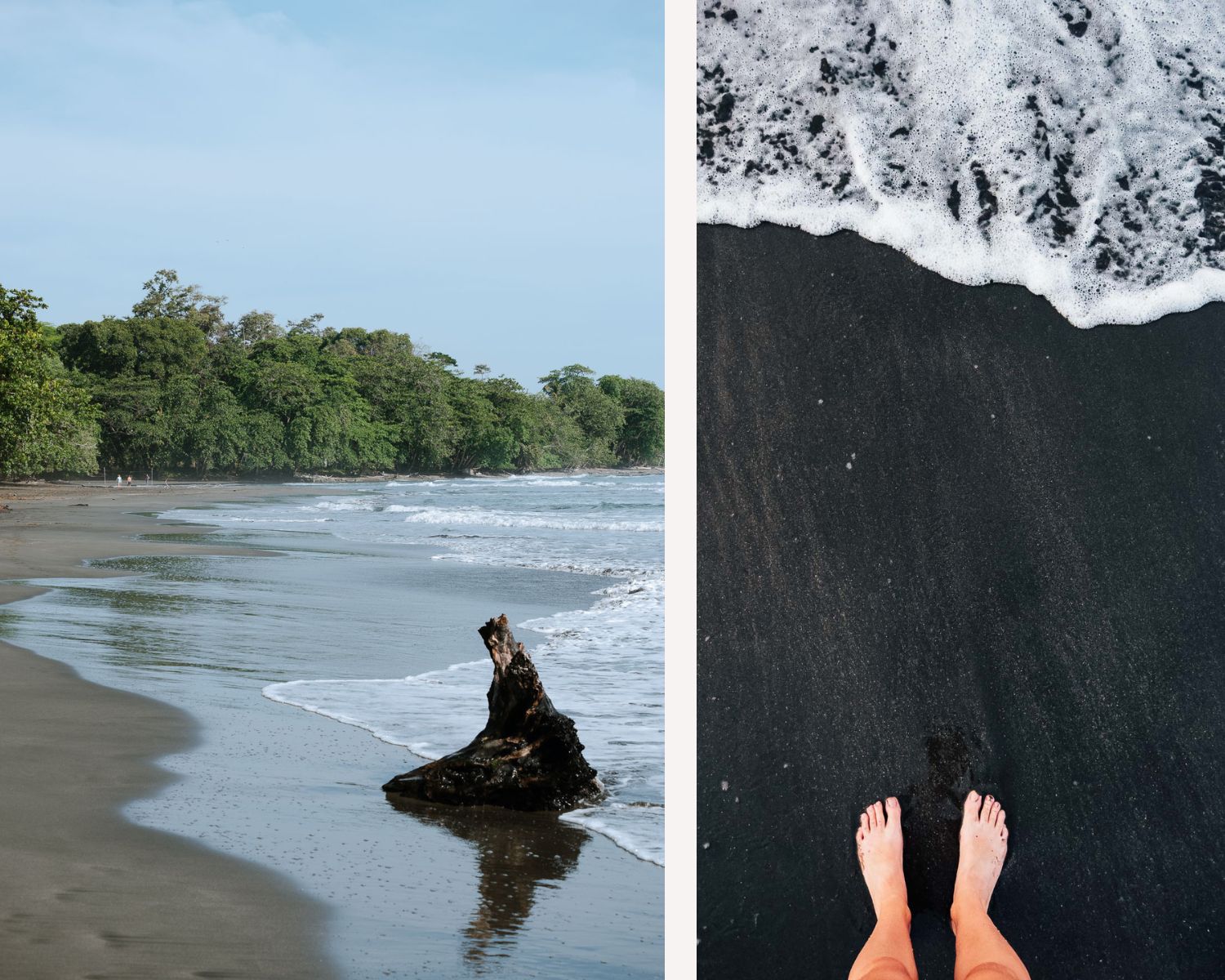
Last destination of our itinerary in Costa Rica, Cahuita. There are several villages on the area. We chose Cahuita because it is less touristic than Puerto Viejo. There is also Manzanillo that looks super nice but we didn’t have time to visit it.
Neverthless, Cahuita is a great destination to get off the tourist path in Costa Rica and I think the most non-touristy stop of the itinerary. The interests of Cahuita are the beautiful beaches with some surf spot and the of course the National Reserve.
In the park of Cahuita, we were lucky enough to observe sloths, monkeys and several bird species as toucans. Good news, this entrance of the park is free – participation on a voluntary basis . Note that there are several entrance to the park but only the Cahuita entrance, the others are not.

Information about taking the bus in Costa Rica
- The bus is definitely the cheapest way to travel in Costa Rica. You can find all the information and tips to travel with a small budget in Costa Rica here.
- Most of the time, we had to buy our bus ticket directly at the station (except for Monteverde bus).
- Be aware that San José is not so safe, and particularly around some of the stations. I would advise not to arrive at night at the station, or if you can’t, to take a uber to join your hotel.
- Note that there are several bus stations in San José, and for each destination of this itinerary, the bus departs from a different station.
Here are the different bus terminal of San José and their destination :
- Quepos / Manuel Antonio destination : Bus terminal of Tracopa
- Carribbean cost (Puerto Limon, Cahuita, Puerto Viejo, Manzanillo): Terminal Atlantico Norte
- Monteverde : Terminal 7-10
This is our Costa Rica itinerary and how we discovered this beautiful country, without a car, exclusively by public transport. We absolutely loved our aventure there and were amazed by the wildlife diversity and lush landscapes. For more aventure, follow me on my Instagram!
If you are looking for an alternative to Costa Rica, with less tourists and cheaper options, Ecuador is a great destination! Check out Sasha’s blog to find great tips about this destination. Click here (point 4 of article).

